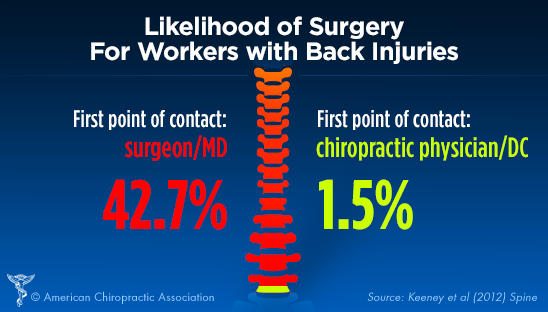Recognizing The Contrasts Between Cold Laser Therapy And Typical Approaches
Recognizing The Contrasts Between Cold Laser Therapy And Typical Approaches
Blog Article
Produced By-Hodge McCulloch
When considering your treatment alternatives, it's essential to recognize the differences in between cold laser therapy and standard techniques. Cold laser therapy utilizes certain light wavelengths to improve healing without pain, while conventional treatments often entail medications or invasive procedures. Each approach has its benefits and drawbacks, which can considerably influence your recovery. So, what aspects should you weigh to determine which approach might be best for you?
Mechanisms of Action: How Cold Laser Treatment Functions Compared to Traditional Therapies
While conventional treatments frequently rely on pharmaceuticals or invasive treatments to alleviate discomfort and advertise recovery, cold laser treatment makes use of a non-invasive approach that directly targets damaged tissue.
This treatment uses certain wavelengths of light to pass through the skin, boosting cellular activity in influenced locations. You'll discover that the light energy advertises ATP manufacturing, boosting cellular metabolic rate and assisting in tissue fixing.
Unlike traditional approaches, cold laser therapy does not develop warm or create pain, making it an extra tolerable alternative. By boosting blood flow and lowering inflammation, it encourages faster recovery without side effects related to drugs.
As you discover your options, recognizing how these devices job can help you make notified choices concerning discomfort management and healing strategies.
Advantages and Efficacy: Examining End Results of Cold Laser Treatment Versus Standard Techniques
As you compare cold laser treatment to conventional therapies, you'll discover that the advantages and efficiency of this innovative strategy can be fairly engaging.
Cold laser treatment commonly causes quicker discomfort relief and reduced inflammation without the adverse effects commonly associated with drugs or intrusive treatments. Clients often report enhanced mobility and faster recovery times, making it an enticing choice for various conditions, consisting of musculoskeletal injuries and chronic discomfort.
Additionally, its non-invasive nature means less dangers of difficulties, permitting you to resume daily tasks faster. Several researches support its performance, demonstrating considerable renovations in pain management and recovery rates.
Possible Disadvantages: Dangers and Limitations of Cold Laser Therapy and Standard Therapies
Despite the appealing benefits of cold laser treatment, it is necessary to think about possible downsides and restrictions associated with both this treatment and standard techniques.
Cold laser therapy might not work for everybody, and its outcomes can differ based upon specific problems. Some patients could experience moderate negative effects, such as temporary pain or skin inflammation.
On the other hand, conventional treatments commonly come with threats like side effects from medications or issues from invasive treatments. Furthermore, conventional therapies might require longer recuperation times.
It's essential to consider these variables when picking a therapy plan. Consulting with a health care specialist can aid you figure out the best strategy for your details needs and scenarios.
Verdict
Finally, comprehending the distinctions between cold laser treatment and traditional treatments can equip you to make educated health care options. Cold laser treatment uses a non-invasive alternative with quicker discomfort alleviation and less side effects, while typical approaches may be a lot more familiar however could involve longer recuperation times. Evaluating the advantages and drawbacks of each method is vital for discovering the most effective solution for your specific needs. weight loss centers in ct fund your reactions and seek specialist advice to navigate your therapy alternatives.
